Ocicat vs Savannah: Appearance & Traits
Lots of people may have a penchant for cats, but some of them aren’t just into cats. Rather, they like to go for rare and exotic-looking felines like the Ocicat and the Savannah, both of which are well-known for their odd coat appearance. Despite their outlandish coat patterns that seem to be something from the wild, both cats are great indoor pets. They have wonderful personalities and are far from hostile.
Know more about what these cats are and, later on, you might just realize which breed suits you more.
Table of Contents
Breed Origins
Ocicat


His appearance may be deemed uncommon to most of us, but the truth is, this cat is never a wild one. His ancestors are all domesticated, therefore, the Ocicat can be a house pet as well. It was through Virginia Daly of Michigan, USA why the Ocicat emerged. She crossbred the Abyssinian and the Siamese in an attempt to make an “Abypoint.” One generation after, another litter was born and out came, Tonga, the first-ever Ocicat.
Ocicat as a term was influenced by the Ocelot animal due to their similarity in appearance. Daly’s daughter gave this name herself. Several breeders used the same recipe Daly used and helped produce more Ocicats. The American British Shorthair was introduced to the breed by an error caused by the Cat Fanciers’ Association, but the mistake turned out to be advantageous in making the Ocicat tougher.
Savannah
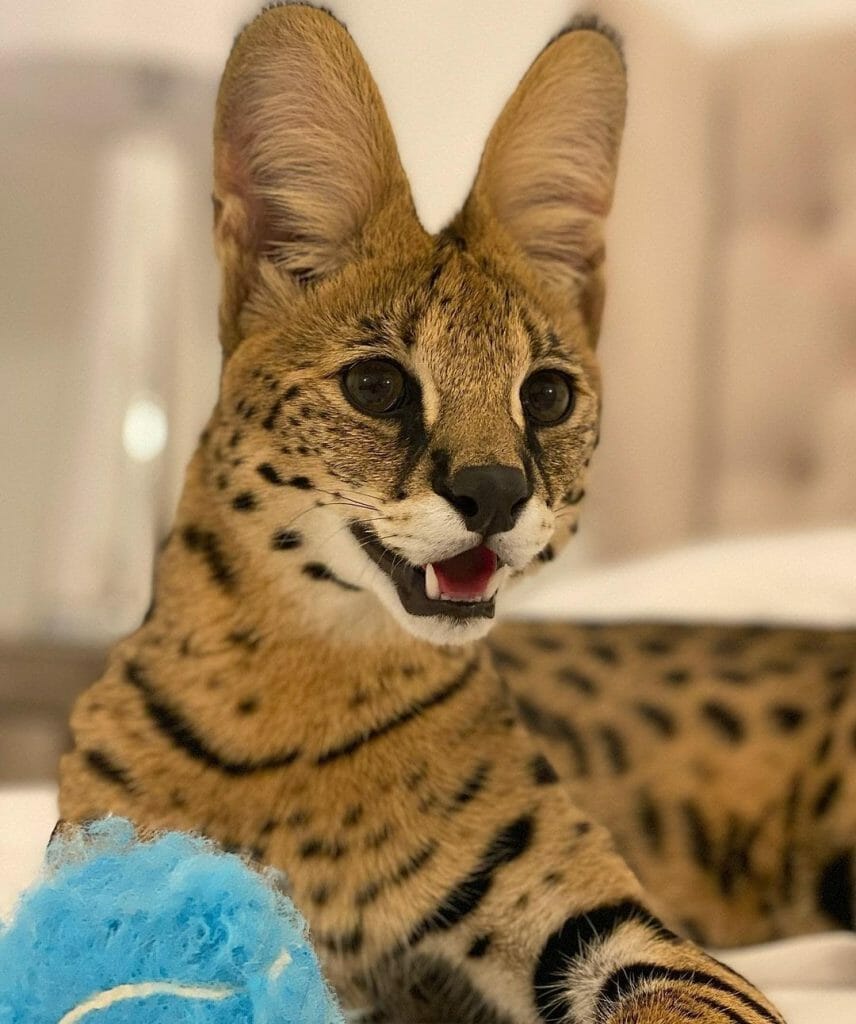

The first breeding program of the Savannah occurred in the 1980s through Judy Frank, who was a Bengal breeder from Pennsylvania. The breed was a cross between a domestic cat and a Serval, which is a wild African cat.
The peculiar crossbreeding instantly became a hit for thousands of cat lovers at the end of the 1990s. The International Cat Association (TICA) then accepted it as a new registered breed.
There are variations in the Savannah breed. an F1 Savannah has a domestic cat parent and a Serval cat parent. The following generations will then be produced by a Savannah cat father. The farther the Savannah cat is from his pure Serval ancestor, the more predictable his temperament is.
Additionally, this is a hybrid pet and certain states ban Savannah ownership. That means you might want to check first if your area allows you to own this domestic cat with a wild ancestor.
Size, Appearance, & Coloring
Ocicat
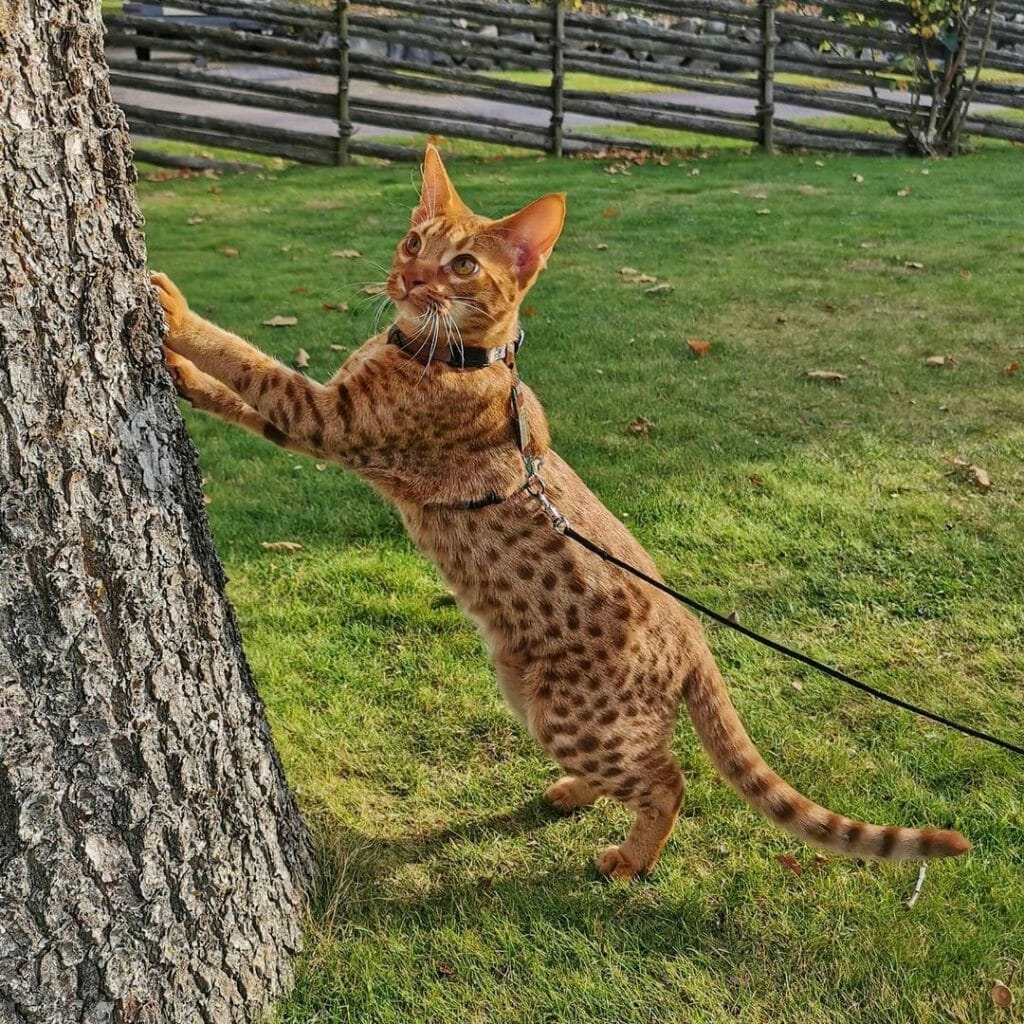

The wedge-shaped head of the Ocicat sports two almond-shaped eyes that come in various colors except for blue and the edge around his eyes has black rims. These are not the highlight of his appearance, however, since his coat looks the most prominent than the rest. He is covered with brown or golden thumb-shaped spots all over his body and a letter “M” marking is displayed on his forehead.
He isn’t chunky but rather just right in size, athletic, muscular, and heavy in the eyes. Furthermore, Ocicats come in various colors which can be the following:
- Chocolate
- cinnamon
- Tawny
- Silver
- Blue
- Lavender
- Fawn
- Silver variants
- Black silver
Savannah
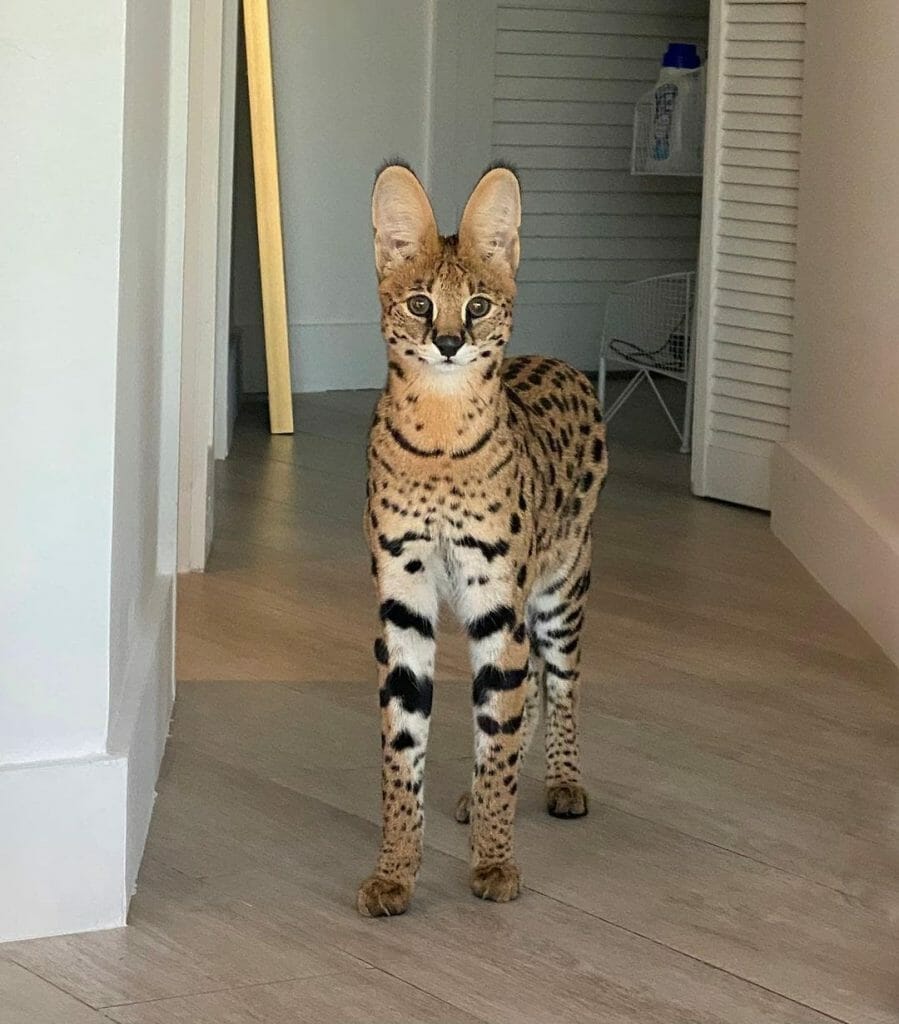

Naturally elegant and classy, that’s the Savannah cat for you! He’s like a mini version of a Cheetah. He stands tall, is lean, and let’s not forget to mention his beautiful coat. Size highly depends on the generation of the cat. Male F1 Savannahs are typically the largest. This is because they are more heavily influenced by the wild cat Serval.
Different physical traits contribute to a Serval’s exotic look. His tall, wide, and round ears that can rotate to the back is a prominent trait. He also has a puffy nose, hooded eyes, notable shoulders, and a taller than wide face. The back of his ears has a pattern that gives off an eye-like effect. The eyes of the kitten are typically blue and they may turn green, brown, or gold once they mature.
The recognized coat colors for the Savannah breed include:
- Brown spotted tabby
- Black
- Tabby
- Black smoke
- Silver-spotted
Temperament
Ocicat
If you’re looking for a friendly and approachable cat, the Ocicat would be the best candidate for that. Guests who visit your home will be happily greeted by this cheerful, highly social, and easy-going cat. He’ll get along with others very well, but he’ll tend to show a more affectionate side of him toward one special family member.
Taking care of an Ocicat means ensuring he gets interaction most times of the day. His social needs are high and he won’t thrive in an environment where he’ll be left alone with no companions and things that will entertain him. With that, getting a gentle and amiable dog or a second cat will keep him from developing separation anxiety.
Savannah
Cat lovers who love to be active will be greatly matched with the Savannah cat. He is highly disinclined to be a lap cat and would rather jump from one high place to another or run and jump around at home or outside. He is agile, graceful, and outgoing, always ready for daily challenges and tasks.
Mostly, he also acts very curiously and is open to new things. Training him won’t be overwhelming since he has high intelligence. Other owners leash their Savannahs while taking them out for a lovely walk.
This cat is great at giving you companionship. He can be loud at times and would tend to follow you anywhere. He’s not very trusting of strangers, but he’ll become loyal once he doesn’t see someone as a threat. Socialization is important during his kittenhood.
Exercise Needs
Ocicat
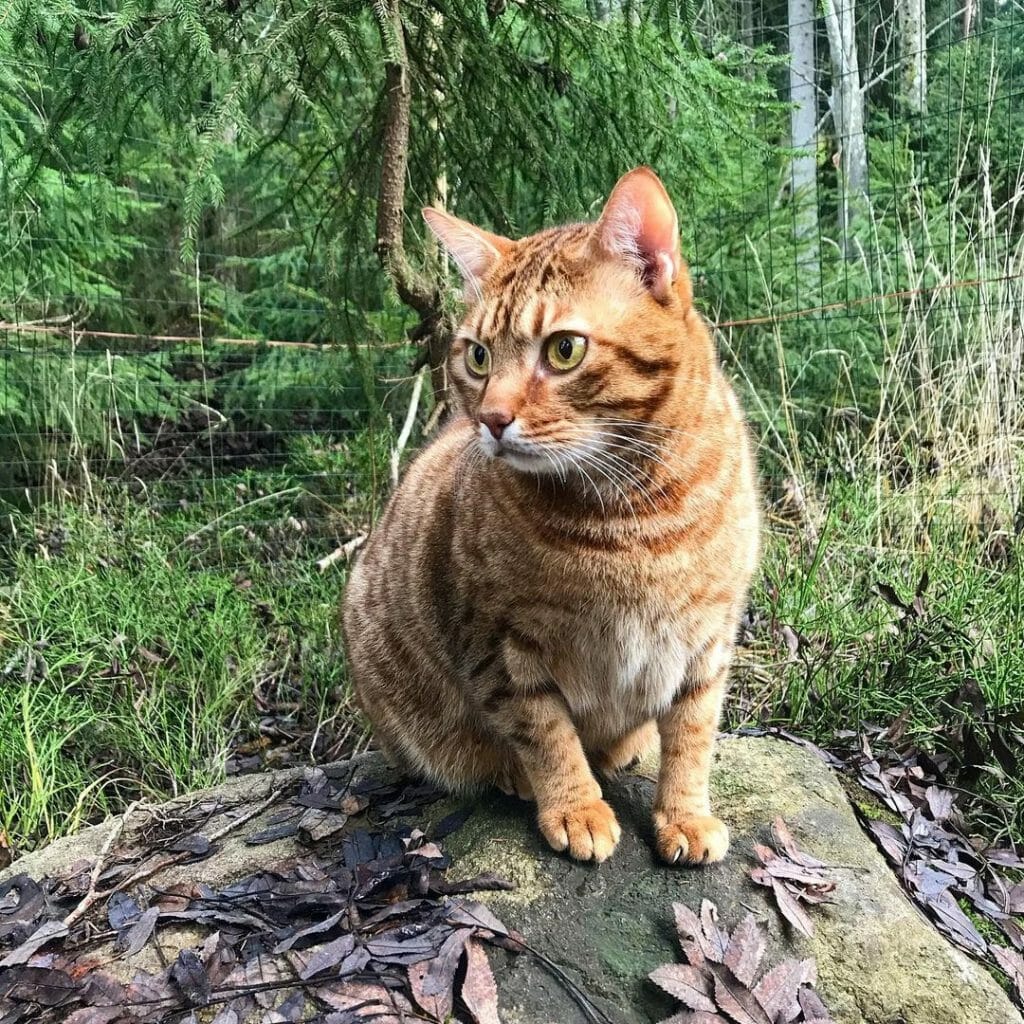

Ocicats are indoor cats, but they would still require being brought outside for play in a natural environment. They are curious by nature and would gladly monitor their territories or run after what catches their interests such as a small squirrel. Climbing up trees or cat towers is what most Ocicats enjoy doing the most. If they aren’t outside enjoying the wind and grass, you’ll most likely see them ransack the toy box.
Physical and mental stimulation should not be deprived from the Ocicats. Invest in quality toys so they can regularly release their pent-up energy.
Savannah
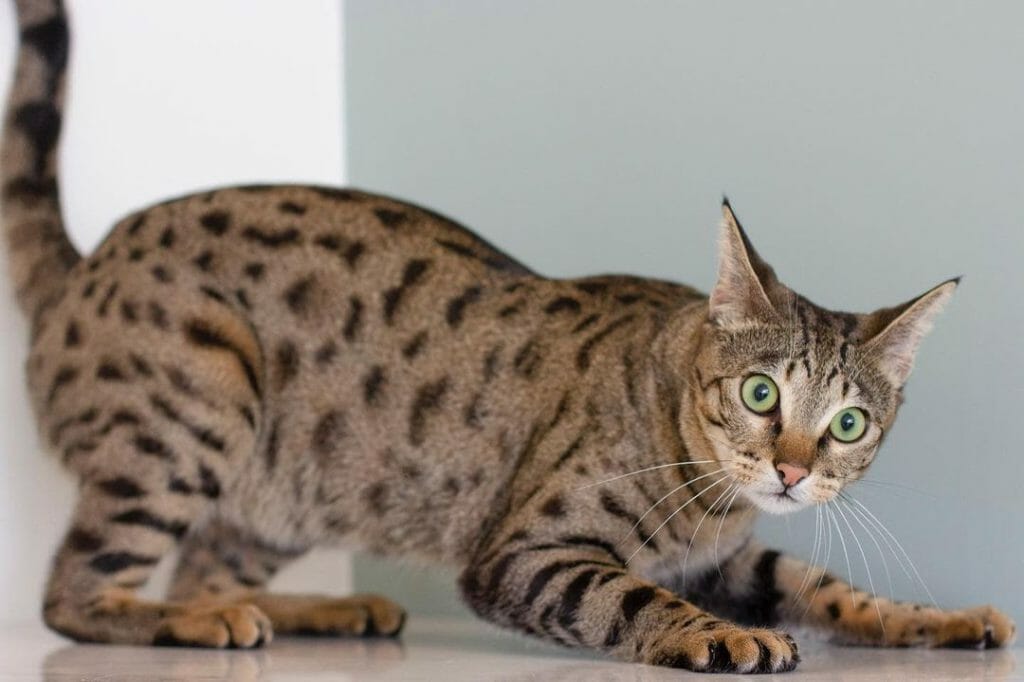

The Savannah cat can adjust to different types of homes. However, you must provide him with great avenues to sweat off and move around. His high energy levels would cause him to do various activities whether it be swimming in the tub, climbing up his tower, or playing with his toys.
Let him watch videos about cats and lions and he’ll, no doubt, get entertained. Interactive games will keep him stimulated and away from boredom as well.
Grooming Requirements
Ocicat
The shedding rate of the Ocicat would mean he’s not in the hypoallergenic cat breeds list. Still, he’s not a high-maintenance cat and would only require weekly brushing to remove all loose and dead hairs before they end up in the drapes and furniture. Ocicats love to play in the water and might join you while you shower, nevertheless, actual baths are not necessary at all unless he’s dirty and smelly.
Savannah
Getting your Savannah to get used to grooming happens when you make it a positive experience. It would be recommended that you start it while he’s still a kitten, so you won’t have a hard time maintaining his hygiene once he’s old. Occasionally brushing is necessary and baths would only be needed when he’s dirty.
Other areas of concern like the teeth and nails must be examined regularly.
Health Problems
Ocicat
This generally healthy breed may live up to 15 or 18 years. Sadly some are prone to health problems, genetic or not, which can shorten their lifespan. Early diagnosis and treatment can prevent the following from getting worse:
- Hyperthyroidism
- Dental disease
- Allergies
- Gingivitis
Savannah
Hybrid cats live a long lifespan. The Savannah cat in particular can reach 12-20 years of age. Sadly, there’s always a possibility for him to acquire or develop diseases that may curtail his life expectancy. Bring him to the vet for a regular check-up as well as to detect early signs and symptoms of the following common diseases and complications:
- Hypertrophic cardiomyopathy
- Rhinotracheitis
- Panleukopenia
- Bacterial and viral infections
Cost per Kitten
Ocicat
Adoption: $75 to $150
Reputable Breeder: $800 to $1,500
Savannah
Adoption: $150 to $500
Reputable Breeder: $1,000 to $20,000
Which Cat Should You Choose?
Both the Ocicat and the Savannah are great cats who offer similar things on the table. However, subtle differences show such as that the Ocicat is smaller than the Savannah. In temperament, the Savannah would need more human attention than the Ocicat and at times, more playful and active than the Ocicat. There is a distinction between their grooming needs as well. Go for the Savannah if brushing him a few times per week is not hard work, but if you prefer a low-maintenance pet, the Ocicat is the better choice.
